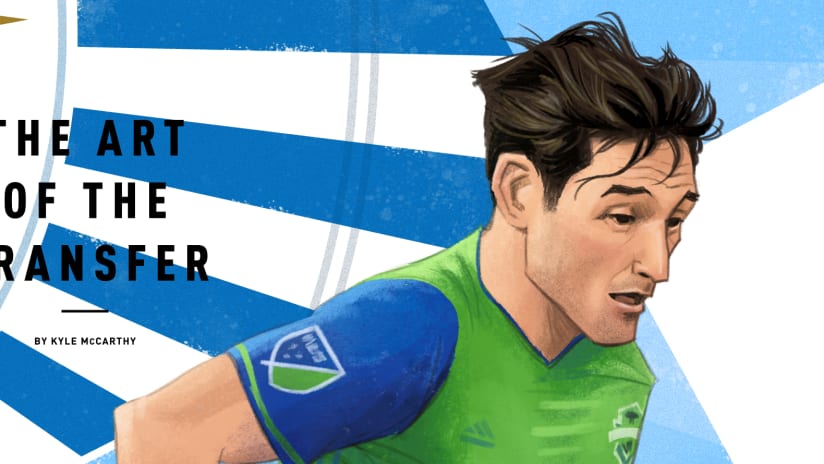NOTE: This is the lead feature in the July edition of Sounders Monthly. Click here to see the full edition. It is available free-of-charge at The NINETY, GuestLink Services locations, Soccer Celebration and Membership Central. You can also access it on the Sounders Mobile App. Kyle McCarthy is an assistant editor and senior writer at New England Soccer Journal.
Several months of work boiled down to one fateful moment last July. The decisive sequence unfolded more or less out of the control of the people who worked so diligently to construct it. Their toil ended right around the time the final multi-million dollar offer for Nicolás Lodeiro hit the table.
Lodeiro shouldered the burden from there. He and his family controlled their own futures. Boca Juniors and Seattle Sounders FC concluded their part once they agreed to a fee and Sounders FC presented the personal terms. This deal, and the next few years for an ambitious club and its potential Designated Player [DP], rested on his choice, his family and his willingness to enter the unknown.
“I don’t remember the date exactly but I remember, after a conversation with [Sounders General Manager and President of Soccer Garth Lagerwey], that they wanted to contract me and what they offered was right on point with the fee that Boca had requested,” Lodeiro recounted through a translator recently. “Honestly, that showed me that they truly wanted me, as it was a significant figure. From that point on, I gave my word and told him that I would be on my way.”
The end result — Lodeiro in Rave Green, playing an integral part in the Sounders’ first MLS Cup triumph in December and setting the stage for a bright future for club and player — is easy for all to see. The process to reach that point was more complex, but it explains how Lodeiro arrived in Seattle after a lengthy chase and outlines how Sounders FC plans to stay at the top of MLS for years to come.
*
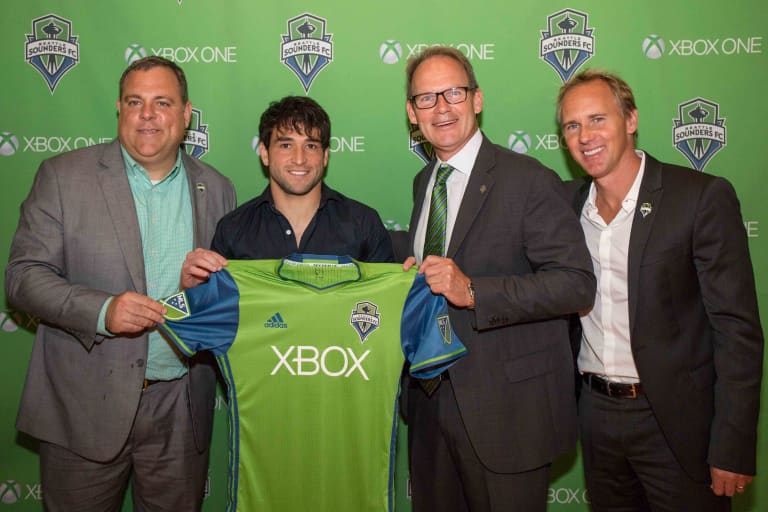
At the start of last season, the prospect of adding Lodeiro or any other Designated Player loomed as a distant eventuality. One unexpected development prior to opening day accelerated the timeline and started the recruitment drive in earnest.
“In our case, at first, we had all of our DPs signed,” Lagerwey said. “We had Nelson Valdez, Clint Dempsey and Obafemi Martins. We got an offer from China two weeks before the season and Oba was really eager to go, so we sold [his rights]. At that point, we were like, ‘OK, we need to go out and get a DP.’ We knew it would take a while, so we started scouting.”
The core of the scouting group — Lagerwey, Vice President of Soccer and Sporting Director Chris Henderson, Director of Player Personnel Kurt Schmid and Sports Science Data Analyst Ravi Ramineni — discussed the situation with the technical staff, then-Sounders FC Head Coach Sigi Schmid and Sounders FC majority owner Adrian Hanauer. They ramped up their constant efforts to uncover players and started to figure out how and where to use the budget room freed by Martins’ departure.
“This club, this city, these fans have everything they need to become a great club. It is a process and it will take time, but everything is in place.” — Lodeiro
As the evaluation commenced, the focus quickly turned from a like-for-like replacement to a different sort of player altogether. In Lagerwey’s estimation, Sounders FC relied too much on the effervescent, incisive dynamic between Dempsey and Martins and suffered when either player missed time for one reason or another. Instead of trying to recreate that elusive partnership, Sounders FC wanted to use the available funds to identify a more sustainable solution to lift the group as a whole.
“We really wanted to get a creative, attacking No. 10 to build the game through and to have a system of play where the whole group could be better and we wouldn’t have such precipitous valleys when we missed a player and everything broke down,” Lagerwey said. “We identified the characteristics before we identified Nico.”
*
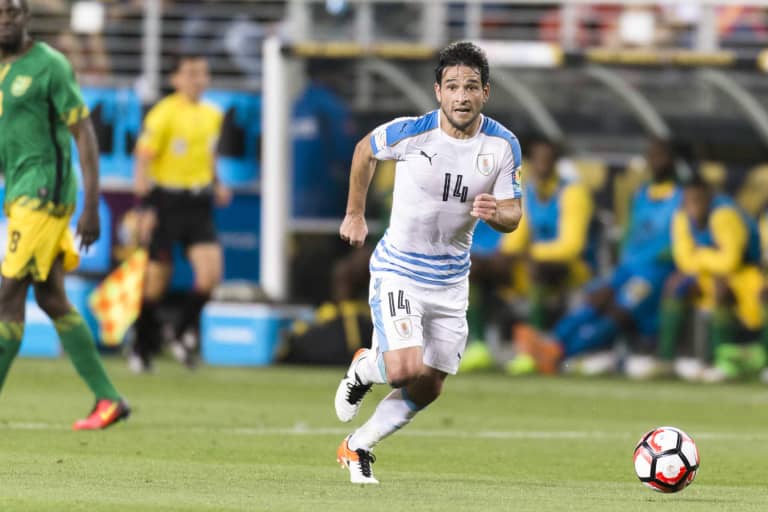
The focus on a specific set of desired traits did not emerge by accident. It followed the processes cultivated since Lagerwey arrived in 2015 and reinforced the development of a scalable acquisition model capable of acquiring bench players for S2 all the way through landing top-of-the-roster signings like Lodeiro.
In some ways, the quest for a new DP reflected the alterations throughout the club over the past couple of years. Those changes affected every component of an ascendant team and a growing business, but they exerted particular influence in how the club identified potential additions throughout the organization.
“Last year, through our whole organization, we reset our goals,” Henderson said. “On the business side, they did it. On the soccer side, we had worked through defining every position on our team and the characteristics of each position. As we go out and look for those types of players, we constantly meet with the coaches — me, Garth, Kurt Schmid as our scout — and we’re constantly talking about what positions we need. [The targets] fit the characteristics that we’re looking for in those positions. We try and stay consistent with that.”
Those characteristics form the framework of the ideal target, but the situation always requires further exposition based on the particular need at the time. It is a collaborative practice that requires more than just one or two contributors. Hanauer provides insight and financial guidance. The experience of Sounders FC Head Coach Brian Schmetzer and the global knowledge of assistants Gonzalo Pineda and Djimi Traore offer a considerable network to leverage on a couple of continents.
“We know [Lodeiro] checks all the boxes: He’s a tremendous athlete, he’s a great player, he wanted to come to America, he wanted to come start a career in the middle of his career [in Seattle].” — Schmetzer
“My deal is that I like guys with strong mentalities and strong characters,” Schmetzer said. “I like to ask the questions like, ‘Why does this player want to come to the United States or why does he want to play for the Sounders or what is his motivation for being here? What is he like? Does he have a big motor? Does he keep going all of the time? Can he problem-solve on the field?’ Those guys know what kind of players I’m interested in or they think can help us win championships. In the back of their minds, they meld their own ideas and their own experiences with — hopefully, they listen to my ideas. It’s [all] good information to have.”
As Schmetzer notes, the calculus includes far more than what a player can do on the field. Sounders FC uses a blended, modern process to weave complex data, heuristic factors (previous successes and successful experience playing abroad, for example), traditional, in-person scouting (the goal for a DP or Targeted Allocation Money signing is multiple viewpoints on multiple occasions, according to Henderson) and video review to evaluate players against the characteristics desired for a Sounder and a Sounder playing a particular position.
“You have those buckets and then you try to find the guy who fills all of the buckets and represents a good fit,” Lagerwey said.
Those precise parameters cull the initial list quickly and define the specific targets for any given need, while other factors such as contract expiration and salary demands further winnow the potential pool of additions.
“We always have a group of players who we are following and tracking over two or three [transfer] windows,” Henderson said. “The challenge is trying to get the guy when you need him and he’s available. Those have to match.”
*
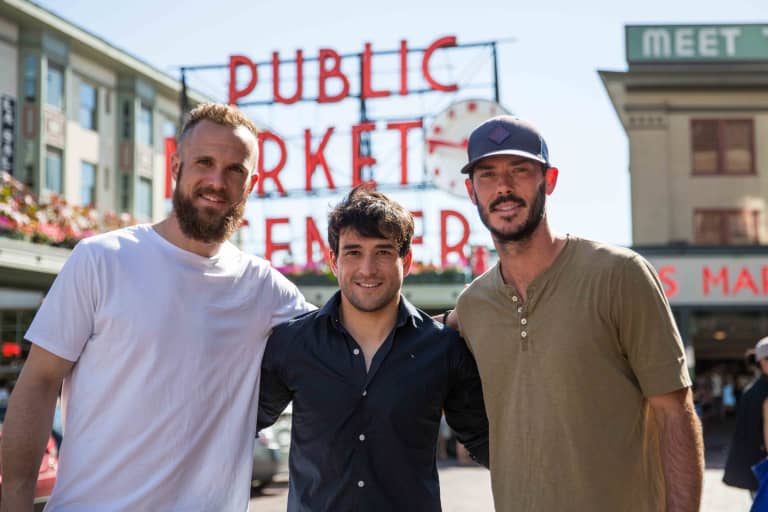
At the start of the DP search last year, Lodeiro initially fell outside of the defined range. Henderson remembers traveling to Argentina last spring to scout a Boca Juniors match and turning to a local contact sitting beside him to inquire about Lodeiro, the player who caught his eye that day with a typically clever and industrious display. The contact told him Sounders FC couldn’t afford Lodeiro with what they had to spend.
Henderson and Sounders FC persisted and watched as the market shifted around their primary target on a list of five or six players. Their budget for the acquisition — defined by Lagerwey as the fee paid for Martins, the salary left Martins behind, plus a little bit more — provided enough heft to proceed. Lodeiro, meanwhile, found himself more and more intrigued about the potential transfer as he learned more and more about the opportunity.
“Last year, four months before arriving, I had spoken to Sigi, I had spoken to Garth, they had revealed that they wanted to bring me here [to Seattle] and, as things began to develop, it became a possibility that I would come here,” Lodeiro said. “From there, we continued talking and negotiating.”
Henderson and Lagerwey traveled to Argentina to see Lodeiro in person, while the enduring connection between Schmid and then-Boca coach and former Columbus Crew DP Guillermo Barros Schelotto supplied a critical link between the parties and some valuable insight into Lodeiro’s character and motivation.
Even as the negotiations continued, the parties navigated through the thicket of Boca’s run to the Copa Libertadores semifinals. Lodeiro and Boca wanted him to stay for as long as the club remained in the tournament. Those obligations, plus the influential trip to the United States to play for Uruguay in the Copa América Centenario and show his family the potential benefits for the relocation, remained foremost in his mind, but Lodeiro still gathered intelligence as the decisive moment approached.
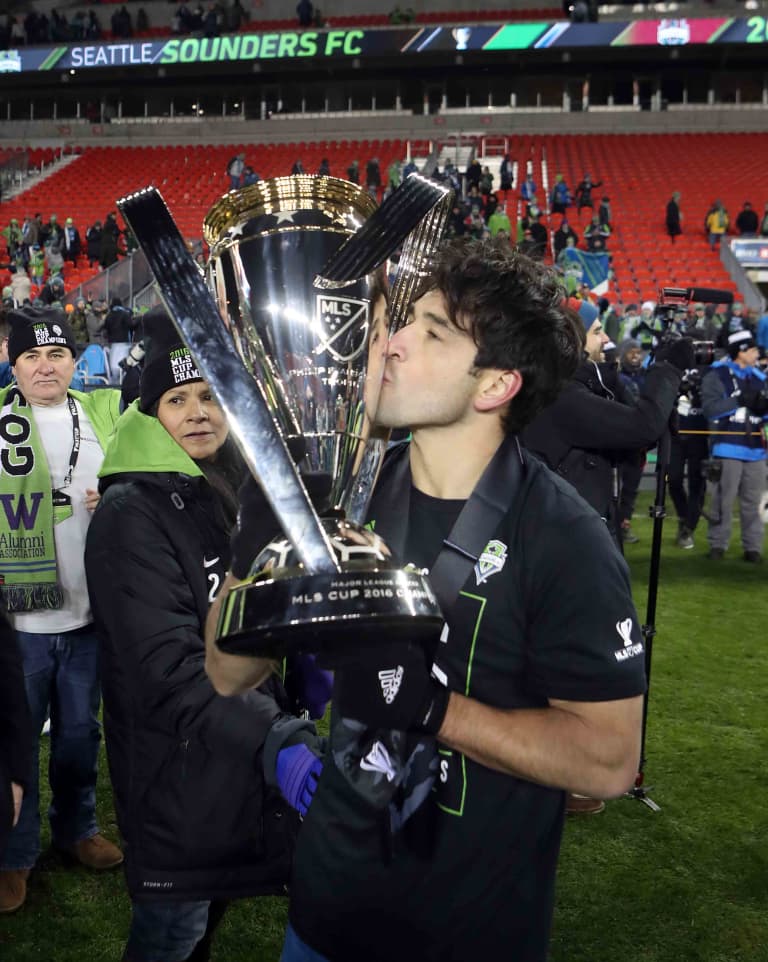
“You separate those things,” Lodeiro said. “I knew the possibility of coming here but my mind was thinking of Boca [Juniors] because I have a contract there and I wanted to do my best. When I could, I was asking questions. They told me about the United States, they told me about the league, they told me about the club. I had the fortune of having Guillermo, who played in MLS and was a champion [with Columbus under Schmid in 2008], as my coach and I was able to ask him questions about all of those things. So, when I was with Boca, I was mentally preparing myself through conversations with Guillermo.”
All of those conversations and all of the diligence shown by Sounders FC over several months paved the way for Lodeiro to accept the move and commit his long-term future to the club last July. As he looks back on his choice, he cites the ambition of the club and the possibilities it affords as the driving force behind his choice to play in MLS.
“The city is perfect,” Lodeiro said. “It’s calm and the technical staff conveyed to me that this was a big project they were working on. They said this was a good team and then I wanted to come here. MLS is continuing to grow and improve and it’s a good level of play. They kept telling me this was a large project with a very big fan base and that they had high aspirations for the club in MLS and beyond. Those things motivated me to want to come here.”
Even when the deal is done, there is a certain amount of projection on both sides. No amount of legwork and research ensures the chosen player is the right fit for a club once he arrives. No amount of commitment and talent guarantees any player success in a particular situation. The preparation identifies and hopefully reduces the risk inherent in every transfer, but the reality and the results only surface over time.
By any measure, Lodeiro has had a wildly successful year in Seattle. His arrival catalyzed a talented team, earned him 2016 MLS Newcomer of the Year honors and played a significant role in the club’s resurgence in the second half of the season and its first MLS Cup title. He settled quickly and supplied the sort of earnest, willing example every club craves from its best players.
The job isn’t done yet, though. Lodeiro is in the prime of his career, a 28-year-old playmaker with a lengthy contract in hand and plenty still left to achieve and give. His arrival isn’t just about winning one MLS Cup. It is about setting the stage for continued, prolonged success for himself and for his club during his time in the Pacific Northwest.
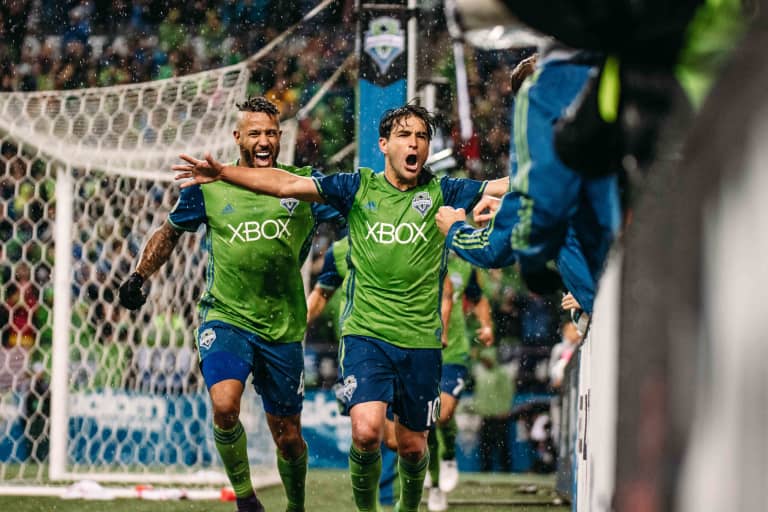
“We know he checks all the boxes: He’s a tremendous athlete, he’s a great player, he wanted to come to America, he wanted to come start a career in the middle of his career — not at the end of his career — here,” Schmetzer said. “I want him to continue to evolve, continue to adjust, continue to keep learning. Our league is expanding rapidly. There are more and more good players coming in. He’s got some adjustments to make just based on the fact that people know him now.”
Lodeiro embraced this long-term challenge from the moment he landed a year ago. He is used to pressure after a career spent playing for clubs like Ajax and Boca Juniors. This latest quest fits right in stride with the rest of them, even with its unique challenges.
“The Sounders have everything they need to become a big club,” Lodeiro continued. “The most important thing was winning an MLS Cup because that is the first step to truly get started. The next step is to start winning international titles so that it can become like other big teams. I’ll say it again: This club, this city, these fans have everything they need to become a great club. It is a process and it will take time, but everything is in place.”
Those sentiments underscore the importance of leading Lodeiro to that critical juncture last July. All of the intelligence and all of the knowledge gathered along the way slid club and player into place. Those same blueprints, and the chance to replicate those procedures to identify a different player capable of making a valuable impact some point down the line, sketch the way forward as Sounders FC sets its sights into the future.

